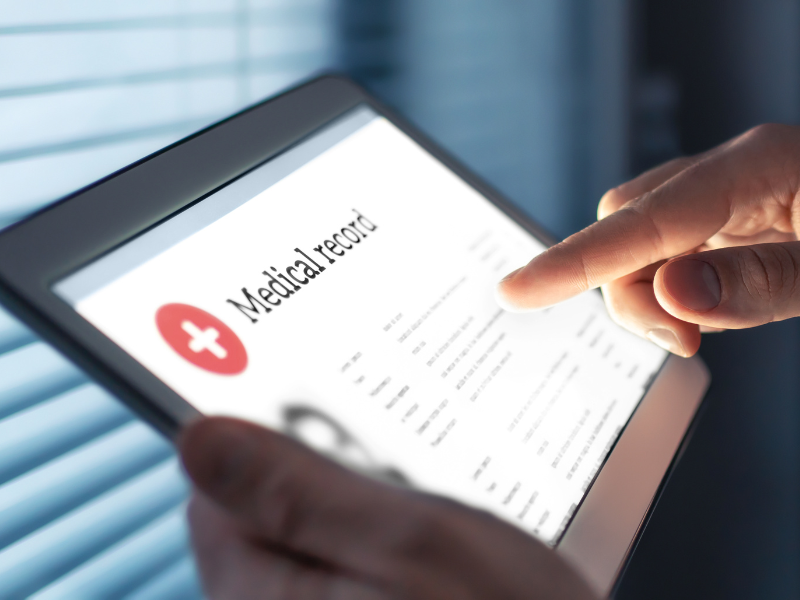Ensuring Compliance While Managing Digital Patient Records

As healthcare providers increasingly embrace digital transformation, managing patient records has become faster, but also riskier. With the rise of cloud-based systems, mobile access, and patient portals, the volume and complexity of electronic health records (EHRs) have grown exponentially. While these innovations improve care delivery and coordination, they also introduce significant compliance challenges.
So, how can healthcare organizations manage digital patient records securely while staying compliant with ever-evolving regulations like HIPAA and the HITECH Act? The answer lies in adopting the right technologies, processes, and oversight strategies from the start.
The Growing Complexity of Digital Patient Records
Electronic health records today are more than just digital charts. They live in a network of interconnected systems—cloud databases, mobile apps, third-party billing platforms, and patient-facing portals. According to the Office of the National Coordinator for Health IT, nearly 9 in 10 office-based physicians use EHR systems, many of which are integrated with other tools for patient access and care team collaboration.
This complexity introduces several new risks:
- Multiple access points (physicians, nurses, admin staff, remote vendors)
- Real-time data sharing across institutions and platforms
- Frequent updates and migrations that may lack proper controls
Without a unified compliance strategy, these dynamics can quickly spiral into vulnerabilities.
Regulatory Standards That Must Be Met
Healthcare organizations are required to follow several federal laws and frameworks to protect patient data. Chief among them are:
HIPAA Privacy Rule
Mandates the protection of all “individually identifiable health information,” requiring policies for how patient data is used and disclosed.
HIPAA Security Rule
Focuses on safeguarding electronic PHI (ePHI) through administrative, physical, and technical safeguards—including access controls, audit controls, and transmission security.
HITECH Act
Promotes the adoption of EHRs while increasing HIPAA enforcement, especially around breach notifications and penalties.
Interoperability & Audit Requirements
Recent rules from CMS and ONC require systems to share data more freely, but without compromising security. That means providers must:
- Maintain audit trails of who accessed what, and when
- Implement role-based access to restrict unnecessary data exposure
- Use end-to-end encryption during storage and transmission
Common Compliance Pitfalls in Digital Record Management
Even well-intentioned organizations can fall into traps. Here are four common missteps:
Unsecured Transmission or Storage
Sending unencrypted files via email or storing PHI in unprotected cloud folders is a direct HIPAA violation.
Improper Access Controls
Not all employees need the same access. Failure to enforce role-based access increases insider threats and accidental breaches.
Lack of Visibility into Access Logs
If you can’t see who accessed a file or when, you can’t prove compliance or investigate suspicious activity.
Gaps in Data Retention or Deletion
Some providers retain digital records indefinitely or dispose of them improperly, both of which violate HIPAA retention and disposal guidelines.
Best Practices for Managing Digital Records Securely and Compliantly
To stay compliant while managing digital records, organizations must build a foundation of proactive, layered security practices:
Automate Access Controls
Use role-based access systems that automatically adjust permissions as roles change. This ensures staff only see what they need.
Encrypt Everything
Encrypt files at rest and in transit. Whether stored on local servers or in the cloud, PHI must be protected from unauthorized access.
Conduct Routine Audits and Risk Assessments
Annual risk assessments are required under HIPAA and should include penetration testing, audit trail reviews, and policy updates.
Standardize Governance Policies
Establish clear, documented policies for:
- Access provisioning
- Data sharing
- Incident response
- Retention and deletion
These policies must be communicated across all departments and reinforced with training.
How Trust Lineage Supports Secure Record Management
At Trust Lineage, we help healthcare organizations simplify secure record management with end-to-end visibility, automation, and policy enforcement.
Our platform offers:
- Automated access monitoring: Instantly detect who accessed what file, from where, and at what time.
- Real-time compliance checks: Get alerts for policy violations or abnormal behavior before they become breaches.
- Comprehensive audit logs: Prepare for HIPAA audits with detailed records that prove compliance.
- Secure workflow automation: Ensure records are stored, transmitted, and disposed of according to HIPAA and organizational policies.
With a zero-trust architecture and 38+ years of experience supporting over 15,000 businesses, Trust Lineage is uniquely positioned to help healthcare providers stay compliant while reducing administrative burden.
The Future of Digital Health Data and Compliance
As technologies like AI, machine learning, and predictive analytics become integrated into EHRs, the risks and opportunities for compliance grow.
New interoperability mandates will push providers to share more data with fewer barriers. At the same time, threats like ransomware and AI-driven phishing are becoming more sophisticated.
Forward-thinking providers must invest in scalable compliance infrastructure that evolves with regulatory expectations and patient needs.
Final Thoughts
Managing digital patient records is no longer just an IT function—it’s a compliance challenge and a strategic priority. By understanding the risks, following best practices, and partnering with the right experts, healthcare providers can protect patient privacy, meet regulatory obligations, and future-proof their operations.
Looking to gain full control over your digital records and compliance processes? Connect with Trust Lineage to learn how we can help you simplify, secure, and scale your patient record management strategy.
